|
1929 The Funnies is published. It's an experiment that takes the form of a tabloid sized package of comic strips.
1930
1931
1932
1932
1933 The Funnies on Parade is published as a giveaway item.
1934 Famous Funnies is first published. This is ususally considered the first comic book. It was actually for sale, and closely resembled the common format. Alas, it held only strip reprints.
Skippy's Own Book of Comics is published. This publication is devoted entirely to the title character of Percy Crosby's wildly popular 'kid' strip.
1935
1936 King Comics is first published
1937 Detective Comics #1 is published. This is the first DC Comic published, notable for it's use of original material.
Western Picture Stories is also published. 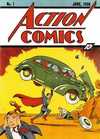
1938 Action Comics #1 is published in June. It contains many features, but it's cover feature, Superman, is the one who explodes onto the scene and transforms comic books into a cultural force.
1939 Detective Comics #27 is published in May. Batman is introduced to the world as the second major superhero. 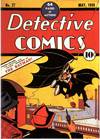
Marvel Mystery Comics is published in November. This comic introduces a double serving of big characters: The Torch and the Sub-Mariner.
1940 Fiction House, a major publisher of pulps, enters the world of comics with Jungle Comics and Planet Comics, both released in January.
Whiz Comics #2 hits in February. Captain Marvel (of Shazam! fame) becomes a strong chracter who eventually gives Superman a run for his money.
The Shadow makes his first comic book appearance- Shadow Comics #1
Green Hornet Comics starts.
Doc Savage Comics starts.
All Star Comics #8 introduces Wonder Woman, a psychologist's answer to the blood-curdling masculinity found in many comics.
Flash Comics #1
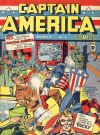
1941 Captain America is brought to the world. Long before the US enters WWII, Joe Simon and Jack Kirby send a superhero to fight the Fuhrer.
Daredevil Comics begins in July. The title character is not the same one that is later published by Marvel, but a particularly fierce Mystery Man with a Red and Blue costume.
Plastic Man has his first appearance in August's Police Comics #1. Plastic Man was a humorous superhero who was a reformed criminal. The Tales of Plas (as he was fondly nicknamed) were told with an energetic mastery that set Jack Cole's work apart.
The Gilberton Company, publisher of Classics Illustrated, is founded.
1942 Crime Does Not Pay is introduced. It starts a spate of popular and violent crime comics, and it features a 'host', Mr. Crime.
Archie Comics brings the unchanging teenager to the world in winter.
Boy Comics, Charles Biro's popular title, is introduced in April.
Supersnipe, and early parody series about the "Kid with the most comic books in America", starts its run of stories.
1943 Walt Kelly's Pogo Possum is introduced. In later years the character will be developed into the star of one of the all-time great comic strips.
Fawcett published Don Winslow of the Navy, featuring the comic strip character of the same time. 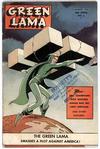
1944 The adventures of The Green Lama start. A superhero trained by monks in the Himalayas, The Green Lama featured the slender figures and elegant line of Mac Raboy from December onward.
1945 first little Lulu comic
The beginning of Airboy comics, featuring a boy fighter ace with an incredible plane.
Frankenstein Comics An extraordinary adaption of Mary Shelley's novel and the films that came from it, this was largely the work of one artist. Frankie switched from monster to villain to hero to -anti-hero, even getting involved in WWII at a time. The peak of this title were the issues that Frankenstein Comics was a friendly humor feature, not unlike the Munsters.
1946 Atomic Bomb Comics
1947 Young Romance from Crestwood was the title that created the romance genre. Remarkably, it came from prolific superhero creators Joe Simon and Jack Kirby.
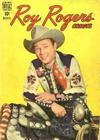
1948 Dell Publishing's Roy Rogers Comics starts in January.
Lone Ranger #1 appears in Jan.
Charlie Chan comes in comics form from Prize
Fox publishes Crimes by Women, showing how far the crime comic fever has gone.
1949 The first issue of Captain Kidd is published by Fox
Fox publishes the comic book with what has to be the single greatest title ever: "I Loved Real Confession Stories"
Scribbly, a humor comic about a young cartoonist, begins its memorable run. Scribbly went on to feature the ridiculous superhero known as the Red Tornado. 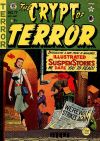
1950 Crypt of Terror is introduced in April, bringing the world the first EC horror comic, and beginning the 'New Trend.' Crypt of Terror evolves into Tales from the Crypt.
Atomic Spy Cases is introuduced in March-April.
Movie Love is published by Famous Funnies.
In June, Fox publishes Will Rogers Western. 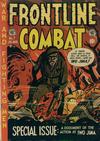
1951 July sees the release of Frontline Combat, which is edited and written by Harvey Kurtzman and becomes the second war comic in Ec's line.
ACG publishes the first issue of Forbidden Worlds, a science fiction comic with some artwork by Frank Frazetta. 1952 In October, Mad Magazine is introduced for the first time as the Tales Calculated To Drive You Mad comic book. Its a work of manic genius that turns the cartooning of artists such as Wally Wood, Jack Davis, and Bill Elder, against the very comic material they draw, turning it all into a great parody.
DC's Our Army at War #81 (April issue) introduces 'Sgt. Rocky' a character who goes on to become the popluar DC War hero, Sgt. Rock.
Atomic War! is released by Ace Mags. Really, how can I say anything more about that?
The funny animal book Fox and Crow begins the show.
1953 All-American Men of War is first published.
1954 Seduction of the Innocent is published. This book attempts to blame comics (especially crime and horror comics) for juvenile delinquency. Many readers are shocked by it's picture section and the sex and violence implications that the book draws out, starting an anti-comics crusade.
Fighting American, a new superhero by Joe Simon and Jack Kirby, is first published in April by Harvey.
The Comics Code is announced. This is a self censoring set of rules, that was very limiting in its original incarnation. A crippling force on creativity, it ruled whole genres out of existence.
1955 EC launches their 'New Direction' line, an attempt to put a new face on their public image. It includes titles such as Aces High, MD, Extra!, Psychoanalysis, and Impact. Despite a valiant effort (especially with Impact, which included the Bernard Krigstein masterpiece 'Master Race' in its first issue) the New Direction fails, and only Mad survives.
Davy Crockett No.1 comes out from Charlton in August. 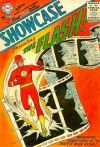
1956 Showcase #4 (Sept-Oct issue) introduces the new Flash, starting a revival of classic superheros, and brings their popluarity up from their low status in the early 50s. This story by Bob Kanigher and Carmine Infantino, started the Silver Age.
House of Secrets #1 (Nov-Dec issue) starts an early attempt at a Code-approved mystery/horror series.
1957 Humbug comes out in August. This is a new comics-laden humor magazine for Harvey kurtzman, the original editor of Mad.
1958 Challengers of the Unknown begins as a series. This comic by Jack Kirby tells stories about a band of non-powered adventurers who roam the world, investigating strange phenomena.
1959 Charlton's Space War come out.
The Double Life of Private Strong is yet another variation on the patriotic superhero by Joe Simon and Jack Kirby, this time for MLJ, the publisher of Archie. 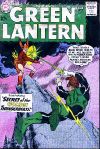
1960 Green Lantern #1 (July-August issue) gives a series to another Silver Age revival. Lovingly drawn by Gil Kane, Green Lantern's adventures often took him to bizzarre alien landscapes where he use his ring to create any tool that he imagined in order to dispense justice. 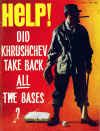
Help! is intoroduced with an August cover date. Another humor magazine from Harvey Kurtzman, Help! went on to feature early art from many of the creators of the underground comics movement, including Skip Williamson. 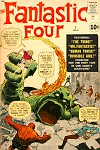
1961 Fantastic Four #1 Once upon a time Marvel was a publisher of monster comics. The first foray into Superheroes to come from under the Marvel banner was revolutionary.
The cover shows a transition from monsters, and the FF didn't even show up in costume till the third issue. Unlike all the heroes before, the FF bickered, argued, got tangled up in love triangles, and even had moments of doubt. They made no effort to have a secret identity, they simply acted like the celebrities they were.
Atom #1 (Jun-July issue) Another superhero revival, this one from Gardner Fox and Gil Kane. 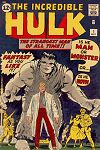
Incredible Hulk #1 (May issue) introduces Bruce Banner's tortured selves to the world. This revolutionary comic mixed Frankenstein and the notion of superheroes, while dealing with the Atomic Age in a mostly serious fashion. For August, Journey into Mystery debuts the adventures of Thor 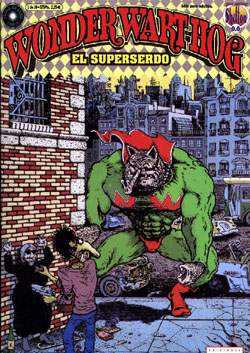
In November, Wonder Warthog stories start being told in a new format. Fans of Gilbert Shelton's ludicrous hero rejoice. For no particular reason, the Mexican edition is shown here. 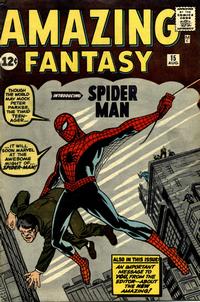
1963 Amazing Fantasy #15 (March issue), the last issue of that failed title features the premiere of Spider-Man by Stan Lee and Steve Ditko. Unlike earlier heroes, Spider-Man had moments of selfishness, particularly in his origin, doubt, failures, and shortcomings. The Marvel revolution had found its posterboy. 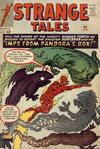
In a July issue, The first Dr.Strange story runs it's course in Strange Tales. The Sorcere Supreme adds a new element to comics. Some readers considered Ditko's bizarre imagery as reference to psychedelics.
The Avengers, Marvel's resident superteam, make their debut in a September issue. Their original members are Thor, Hulk, Iron Man, Ant Man, and The Wasp.
The X-Men, Lee and Kirby's prep school superheroes, begin the run of their ill-fated original title.
1964 Robert Crumb creates an early Fritz The Cat piece 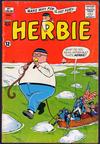
Herbie #1 (April-May) appears -the hero later known as the Fat Fury makes his wonderfully lackluster debut. 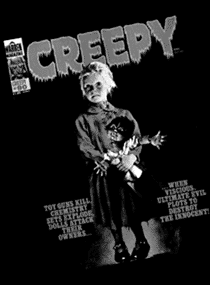
1965 Creepy begins, marking publisher James (Famous Monsters) Warren's first full fledged foray into comics. As a Life Magazine-size black and white anthology, Creepy's fantastic hooror and science fiction stories are revolutionary.
Our Army at War #151 (Feb) introduces German WWI hero Enemy Ace in a tale drawn by Joe Kubert.
T.H.U.N.D.E.R. Agents #1 hits the stands in November. Wally Wood's U.N. sanctioned superteam was an attempt by Tower to compete with Marvel and DC.
Captain Atom starts in December. Along with the Question, Captain Atom is one of the superheroes Steve Ditko created for the Chralton line. 1966 by March, Jim Steranko's handling all the art duties on the Nick Fury stories. As a combination of Bond-era superspies, psychedelia, and surrealism, Steranko's Fury work is both legendary and eye-popping. 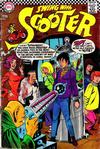
marked as June-July issue Swing with Scooter #1 is DC's attempt to connect with mod culture. Joe Orlando art is used.
1967 Inferior Five #1 (March-April) In the wake of Adam West's Batman, E.Nelson Bridwell and Mike Sekowsky craft this wacky superteam parody.
1968 Zap Comics #1 sparks the underground comics movement. Sold on the street corners of Sna Francisco, R.Crumb's first hit helped head shops grow out of selling rock posters and into the undergrounds. Brother Power the Geek -one of the strangest mainstream characters, The Geek was originally named the Freak, until it was decided that freak implied the drug culture. DC tries to reach the hippie market.
1969 House of Secrets #87 features what may be the first pro art by Mike Kaluta. An art nouveau stylist who came out of the fanzines, Kaluta was one of the first new artists in years. 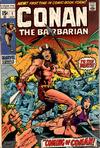
1970 Conan the Barbarian #1
This wildly popular title featured the first Conan work of a new artist named Barry Smith (later Known as Barry Windsor Smith). He later created a name for himself as a fantasy artist. 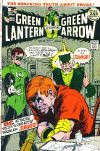
In a story that runs in Green Lantern 85 and 86, Denny O'Neil and Neal Adams break a traditional taboo, by discussing the drug problem.
In January Major changes to the self censoring Comics Code are announced.
Star*Reach (the publisher of Star*Reach, obviously) launches a new platform for science fiction as a ground level publisher, a forerunner to independents like Dark Horse and Image.
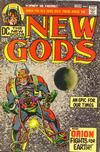
The great Jack Kirby comes to DC and launches his Forth World concept with New Gods (Feb-Mar) Mister Miracle (Apr) and The Forever people. Krirby's complex mythology includes Darkseid, possibly the ultimate villain.
1972 -Tarzan has its first issue at DC, showing Dc's new interest in pulp heroes, and showcasing Joe Kubert's beautiful art. (Apr. issue)
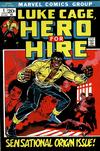
Hero for Hire #1 -Roy Thomas and John Romita (or their editors) think up this attempt to channel black action films such as Shaft. (June Issue)
Swamp Thing #1 -Len Wein and horror master Bernie Wrightson start the swamp monster that foreshadows the Vertigo line. (Oct-Nov. issue)
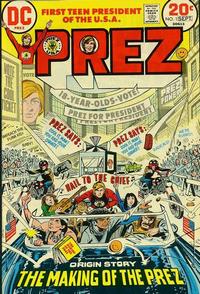
1973- Prez #1 First Teen President of the USA! He's good with animals! He fights vampires! (from time to time) Joe Simon and Jerry Grandinetti's oddest creation
1974 -Man-Thing #1 -All who know fear burn at the touch of the Man-Thing! Marvel's swampmonster debuts as the personal project of Steve Gerber and Val Mayerik. (Jan issue)
Warren starts their Spirit reprints, with some new stories by Eisner. The Spirit returns to the newsstands.
Master of Kung Fu debuts. This title went on to feature Doug Moench and Paul Gulacy, with a debt to Bruce Lee movies and Jim Steranko.
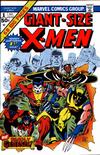
1975 -Giant-Size X-Men#1 by Chris Claremont and Dave Cockrum introduces the new team of X-men. Storm, Nightcrawler, Wolverine, and Colossus become wildly popular.
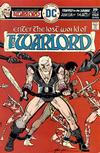
1976 Mike Grell begins his Warlord. Warlord was one of the few popular barbarian efforts to come out after the success of Conan
Superman vs. The Amazing Spiderman really mash up the place.
1977
Dave Sim's Cerebus begins as a Barry Smith Conan pastiche.
1978 ElfQuest #2 (first ish) -Wendy Pini's fantasy epic hits the racks.
|


























